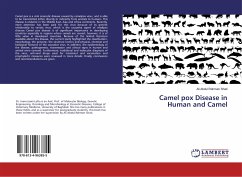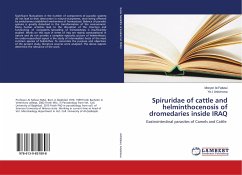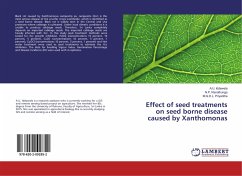
Camel pox Disease in Human and Camel
Versandkostenfrei!
Versandfertig in 6-10 Tagen
24,99 €
inkl. MwSt.

PAYBACK Punkte
12 °P sammeln!
Camel pox is a viral zoonotic disease caused by camelpox virus, and is able to be transmitted either directly or indirectly from animals to humans. This disease is endemic in the Middle East, Asia and Africa continents. Recently, more attention has been paid for this virus because of its genetic relationship to variola virus, which is the causative agent of smallpox disease. Camel pox disease is of significant importance in developing countries especially in regions where camels are reared; however, it is of little value in developed countries. Because of the limited literature available about...
Camel pox is a viral zoonotic disease caused by camelpox virus, and is able to be transmitted either directly or indirectly from animals to humans. This disease is endemic in the Middle East, Asia and Africa continents. Recently, more attention has been paid for this virus because of its genetic relationship to variola virus, which is the causative agent of smallpox disease. Camel pox disease is of significant importance in developing countries especially in regions where camels are reared; however, it is of little value in developed countries. Because of the limited literature available about this disease, the current study highlighted the classification, morphology, the genome, the virulence factors and physical, chemical and biological features of the causative virus. In addition, the epidemiology of the disease, pathogenesis, transmission and clinical signs in human and animal were covered. Furthermore, traditional and molecular diagnosis of the virus, anti-viral drugs used for treatment and vaccination and prophylactic measures were reviewed in more details. Finally, conclusions and recommendations are given.












